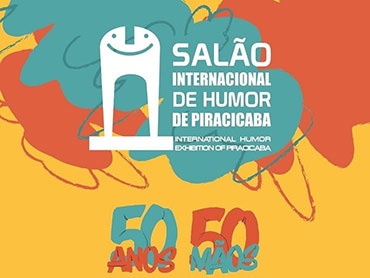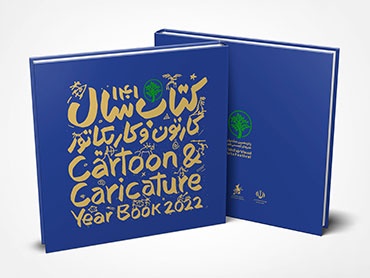
Palestinian Art Emerging Under Siege in Gaza
United Nations bags, stones under rubble, empty boxes: almost any surface is suitable for a new generation of Palestinian artists sheltering in tents. Painting, for them, is a way to protect what still lives.
Hussein al-Jerjawi is eighteen years old and has been displaced five times by Israeli attacks. After missing an entire school year, like thousands of teenagers whose education was suspended by the bombing, he chose a way forward: painting on empty flour bags and raising funds under the do-it-yourself ethic. In them, he portrays families baking bread, refugees pleading for dignity with their arms raised, and women and children turned into chess pawns. In Gaza, where life is played out like a game without rules, art offers a psychological refuge under the fire. Through drawing and painting, some Palestinians relieve their minds from the incessant noise and write, perhaps unintentionally, their memoirs. “I’m making art right now because it’s the only way to communicate the suffering and resilience of our people,” al-Jerjawi told GACETA.
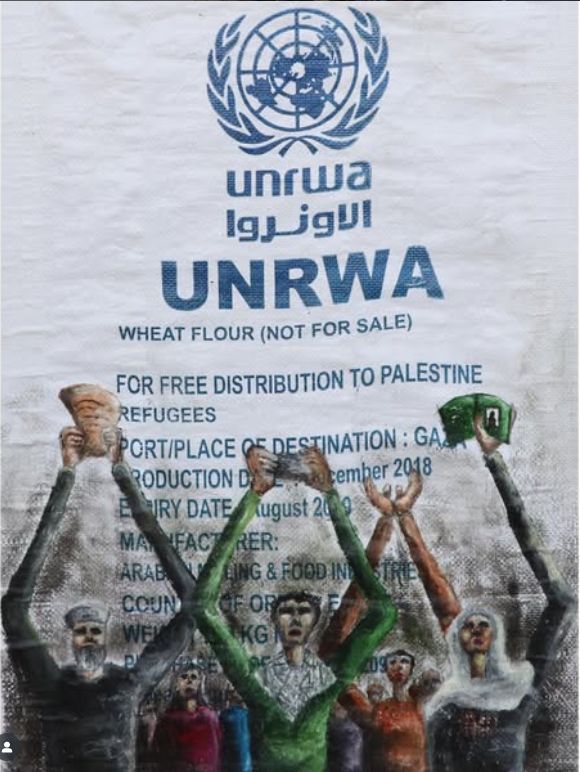
In the late 1980s, artist Suleiman Mansour, a central figure of the First Intifada, began experimenting with mud, henna, clay, and straw. Non-traditional plastic materials. Elements that sprouted from the Palestinian earth. The metaphor was clear: if national symbols were stripped in the war, they would have to be rebuilt with input from their own environment. Today, under a longer and more atrocious siege, this aesthetic principle lives on in Palestinian artists. Instead of imported pigments and canvases, the artists work with medicine containers, notebooks provided by the UN, and stones salvaged from the rubble. It’s their response to the systematic attempt to erase their culture. As multidisciplinary artist Shareef Sarhan said: “Each painting is a document that tells the world that we are alive, that we dream, and that we cling to our roots.”
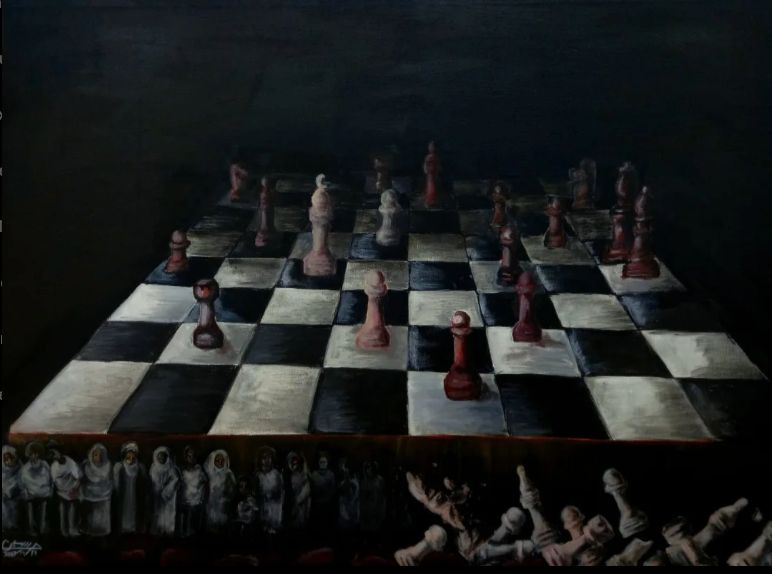
Nineteen-year-old Ibrahim Mahna paints on boxes of humanitarian aid. Where cans of fish once stood, there are now human figures with sunken eyes and open mouths. There are also tents: those fragile fabric shelters surrounded by palm trees that, for a portion of the population, are all that remains. "They don't protect from the wind or from grief. But I paint them so they don't disappear," Mahna told Al Jazeera.
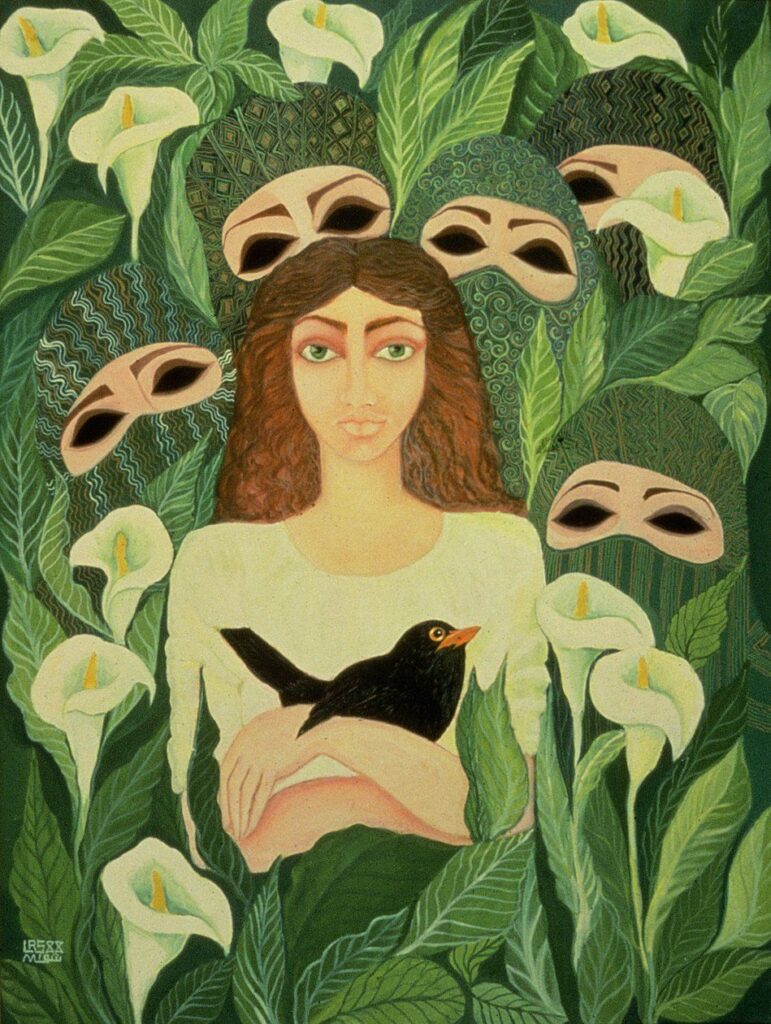
From this forced ecosystem—camps with shelters made of nylon tarps, mud thickened by storms, hands raising vessels as offerings—poetic images emerge. In Gaza, creation is born, once again, from the elements. Scarcity not only drives ingenuity: it builds an aesthetic, redefines the notion of home, and transforms waste into a testament to life. Each work bears the material imprint of the siege. The artists don't erase the UN seals from the bags: they integrate them. There is no deeper story than that written on the remains of what saved a body.
The need to create under siege, to redefine relief materials, and to sustain roots in the midst of displacement has ancient roots. As art historian Adila Laïdi-Hanieh explains, Palestinian visual production did not grow as a formal movement or a stable tradition, but rather as a set of scattered impulses. In the 18th century, some artists linked to the Orthodox Church began painting icons influenced by Byzantine art. Later, several of them trained with Russian monks in the Holy Land, developing a devotional style that was interrupted by the conflicts of the 20th century. In 1948, with the Nakba and the forced expulsion of 700,000 people following the creation of the State of Israel, the possibility of consolidating a local aesthetic was truncated.
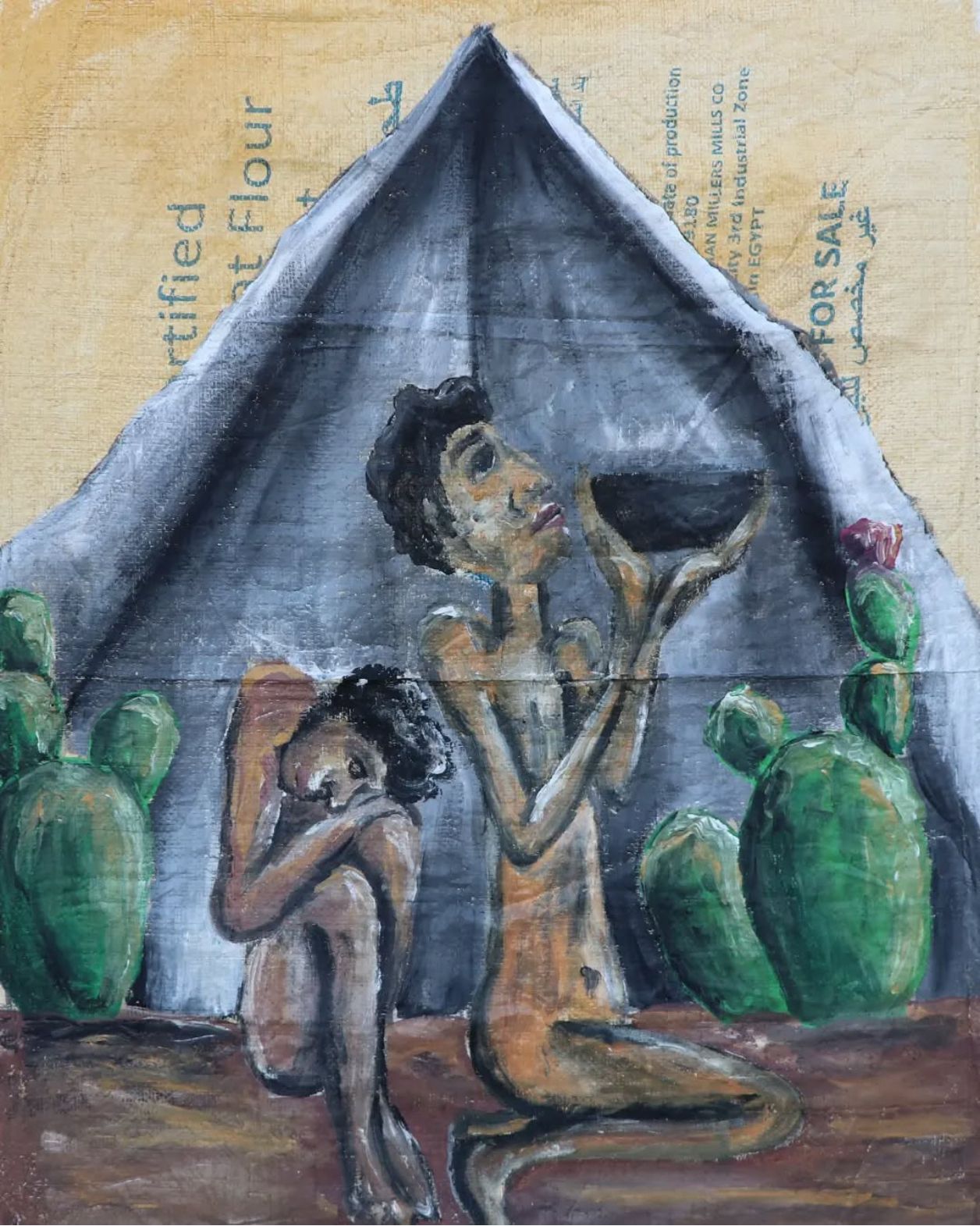
Since then, Palestinian art has developed amidst diasporas and discontinuities. In the 1960s and 1970s, a new generation of artists, mostly born in refugee camps, began using drawing, painting, and printmaking as tools of memory and forms of celebrating their identity. The increasingly politicized exhibitions in the West Bank and Gaza did not sit well with the Israeli side. In response, in 1980, the State of Israel banned ideologically charged exhibitions and the incorporation of the four colors of the Palestinian flag in a single work, according to an article from the University of San Diego. Hence the popularization of the watermelon, which shares the same Palestinian national colors, in local art.
Beginning in the 1990s, Palestinian art entered a period of expansion and risk. It became more conceptual, more multimedia, less patriarchal. Some critics called this period "the tense present" and described it as a display of intimate explorations of the landscapes of occupation and exile. Samia Halaby, a pioneer of Arab abstract painting, turned geometry into a field of emotional liberation, while Laila Shawa used silkscreen printing to denounce the oppression of women under fire. Both demonstrated that art could be experimental without losing its political edge.
Now, under the cramped tents of displaced persons, some artists in their early twenties have returned to drawing and painting. This return is not meant in a nostalgic sense: it can be seen as a new conceptual shift in local art. In an era filled with devastating photos—more than 57,000 Palestinians have died since the start of the Israeli offensive in October 2023—the repetition of stark scenes can begin to chill our capacity for emotion and action. If you type the word "Gaza" into Google, you'll see destruction on all scales: a land in ruins, grieving faces, hands clutching dead bodies. Existence reduced to its most unbearable expression. Art, on the other hand, pauses and rescues what still connects. I see drawings of families gathered around pots of hot food and children peering curiously over a fence, and I think these images seek to remind us that a dignified life also needs to be represented. Hussein al-Jerjawi told me he paints his friends and family because they are the faces that keep him going.
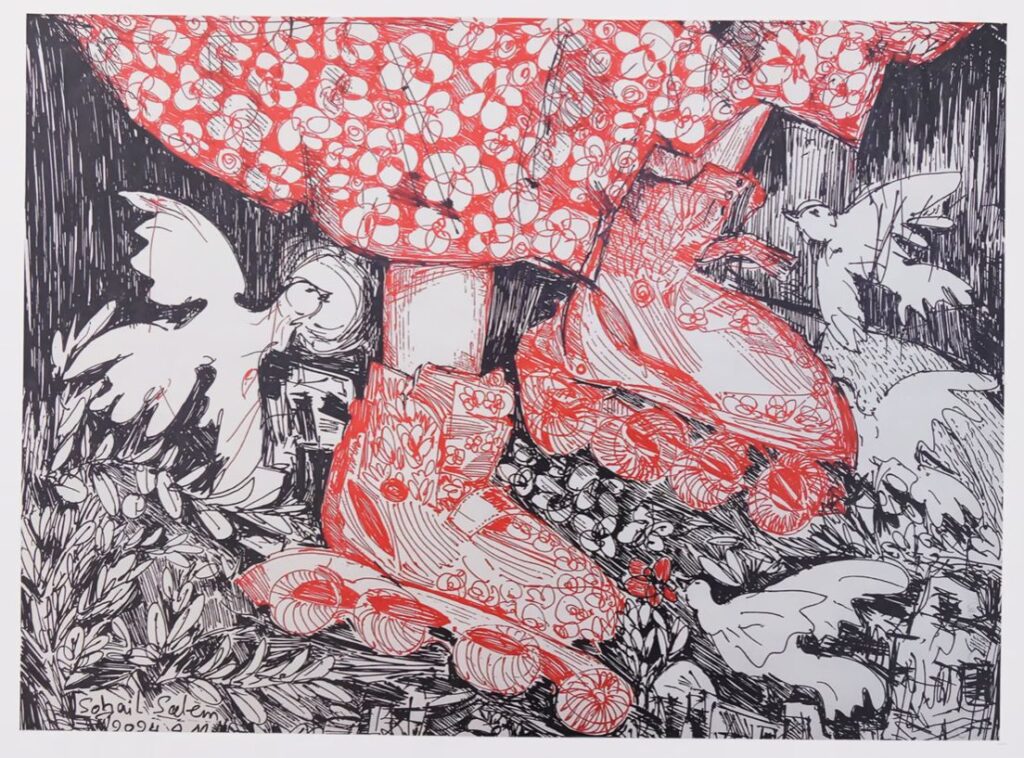
In Gaza, there is no formal art circuit today. What there are are tenacious and scattered efforts to create work amid the emergency. Although the cultural infrastructure has been pulverized—al-Jerjawi tells me that most spaces were destroyed and artistic resources have almost disappeared—the war has not halted the production or mobility of art. Many pieces have left the besieged territory for neighboring Jordan. During the first half of this year, the Darat al-Funun Center hosted the "Under Fire" exhibition, featuring works created in Gaza during the harshest months of the siege. Cities such as London, Barcelona, Chicago, Zurich, and Hiratsuka have also hosted exhibitions featuring works by Gazan artists.
This international expansion of Palestinian art reveals a shift: artists are not only seeking to represent and denounce, they are seeking global connection. On his Instagram account, Hussein al-Jerjawi, the painter who works on empty flour sacks, accompanies his posts with an invitation: to print his pieces, distribute them, paste them, and, if possible, contribute financially so his family can afford the essentials. He isn't necessarily seeking curatorial validation, but rather human solidarity and institutional trust in what he's building. His greatest desire now is to win a scholarship so he can leave Gaza. Art, in this context, ceases to be merely an object of contemplation and becomes a networked connection, circulating as nourishment for a community that believes life cannot revolve around survival.
As part of this same network of connections now being woven, the new generation of local artists creates and, at the same time, teaches. They gather children to name what's happening to them on blank sheets of paper. Sometimes it's a drawing of a destroyed house. Other times, many times, it features parks with flowers, trees, and animals where they run free. In this way, they contain the visceral reaction of loss and experience a space for concentration, reverie, and relief. At a time when school isn't open and psychological therapy isn't available, many children are learning through art to connect with their emotions and narrate their stories.
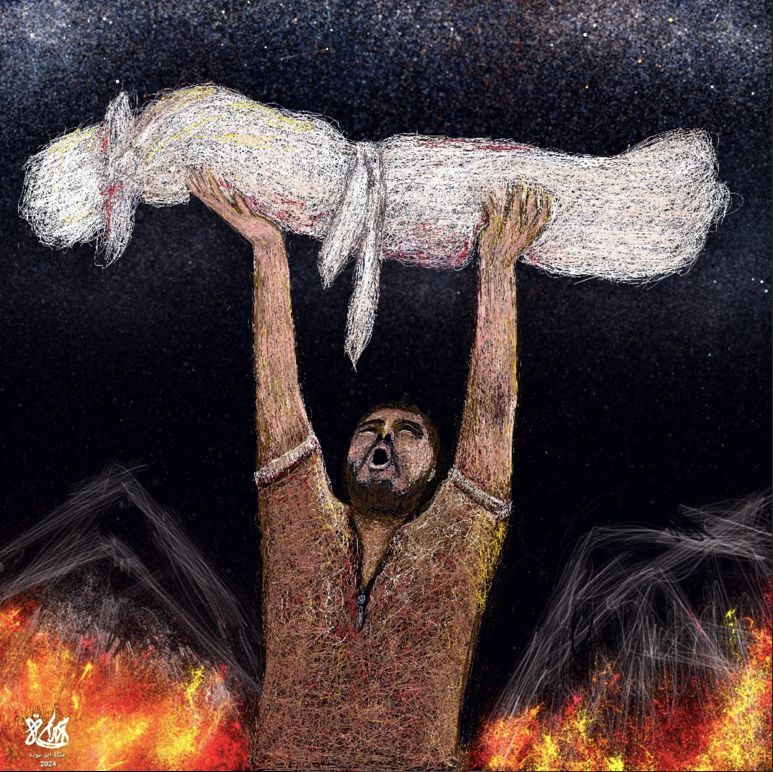
Palestinian art has forged its own path of symbolic survival. If the world decides to pay attention and ask itself questions, it might be worth starting with these: What conversations can art open when it doesn't show lacerated bodies in close-up, but rather community rituals? Can international galleries and museums do more than exhibit? Beyond sharing outrageous images on social media, are we willing to reach into our pockets to support artists who, with every work sold, buy bread, medicine, and blankets to protect them from the cold? The underlying question is this: will the network of solidarity that is currently being built from tents survive when the drones and cameras are turned off? Perhaps Palestinian artists don't need grand gestures, but rather others, on the other side of the world, who commit to their struggle in their own way. If Hussein al-Jerjawi could send a WhatsApp voice note that reached the entire world, it would say only this: "Stop the war. Bring food.
Source
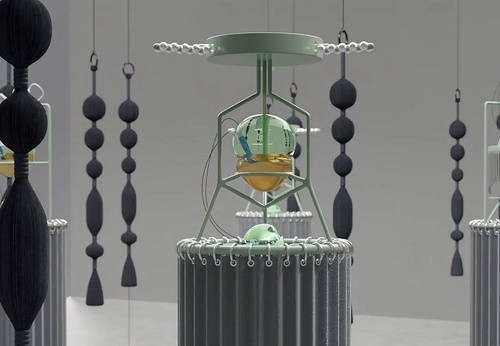
- December 06, 2025
New Media: Video Art and Digital Art in Latin America
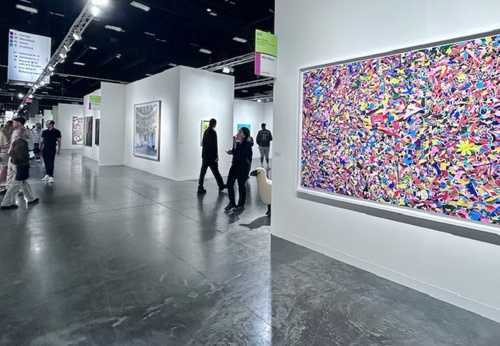
- December 06, 2025
Argentine Art Makes a Grand Entrance at Miami Art Week
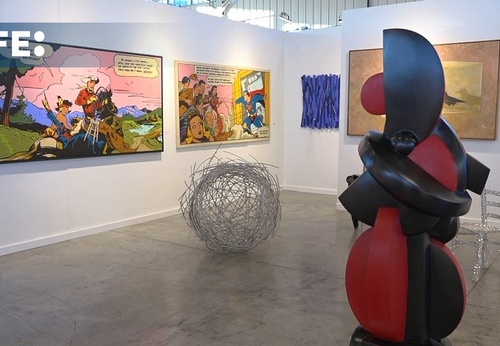
- December 06, 2025
Pinta Miami Highlights Sustainable Latin American Art During Art Week
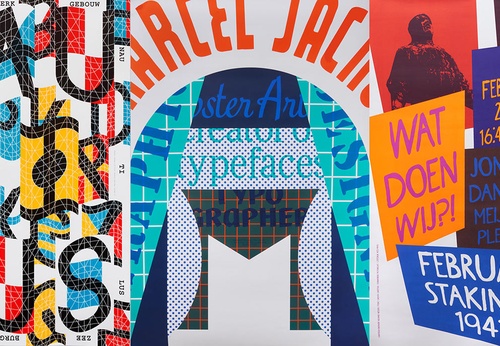
- December 06, 2025
Gallery of Typographic Posters by Richard Niessen – Netherlands
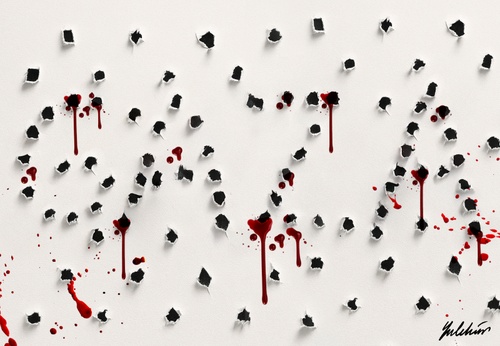
- December 06, 2025
Peace treaty with a hole

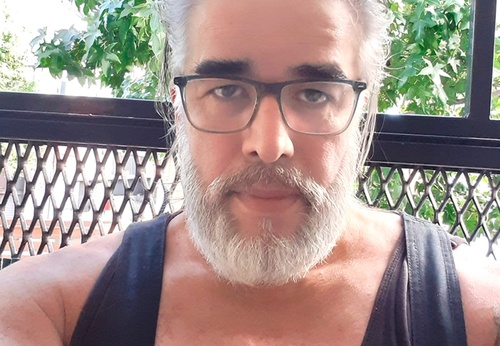
- December 06, 2025
William Ferreira - Uruguay

- December 05, 2025
Gallery of Master Drawings in Art History
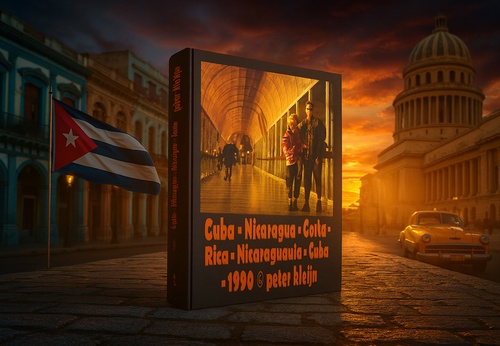

- December 06, 2025
Argentine Art Makes a Grand Entrance at…

- December 06, 2025
Pinta Miami Highlights Sustainable Lati…

- December 04, 2025
Pinta Miami 2025: Epicenter of Contempo…

- December 03, 2025
Pinta Miami Boosts Latin American Art

- December 02, 2025
Exhibition “Unspeakable Gestures,” by A…

- December 02, 2025
Malba: “Pop Brasil” is an essential exh…

- December 01, 2025
Key Fair for Contemporary Latin America…

- December 01, 2025
Unseen Renoir work resurfaces after a c…

- November 30, 2025
How Brazilian Pop Art Challenged the Di…

- November 30, 2025
Palestinian Artist Transforms War Rubbl…

- November 29, 2025
Latin America's Most Important Craft Fa…

- November 29, 2025
Miami, with a Latin rhythm: the region'…

- November 26, 2025
Frida Kahlo Breaks World Auction Record

- November 23, 2025
Latin American Abstract Painting: From …

- November 23, 2025
Pinta Miami Celebrates 19 Years of Lati…

- November 23, 2025
Upcoming Kahlo auction could fetch up t…

- November 20, 2025
An auction in Bogotá

- November 20, 2025
Klimt Breaks Record at Sotheby’s

- November 19, 2025
Pinta Miami celebrates its 19th edition…

- November 18, 2025
Artists and galleries from Brazil and L…

- October 08, 2023
Illustrations reflect the brutal Israel…

- December 25, 2023
The jury statement of the Iran-Brazil F…

- March 21, 2024
The history of art in Palestine

- July 29, 2023
History of Caricature in Brazil

- May 22, 2025
Brady Izquierdo’s Personal Exhibition O…

- September 01, 2023
Neural Filters in new photoshop 2023

- April 20, 2024
Poignant Image of Grief Wins Mohammed S…

- June 29, 2024
Exhibition at Centro MariAntonia contra…

- May 15, 2024
Eleven murals for Gaza painted across t…

- October 21, 2023
Erick Meyenberg and Tania Ragasol at th…

- February 18, 2024
7 Ways to Understand What Visual Arts A…

- August 09, 2023
Venezuela mural expresses solidarity wi…

- March 14, 2024
museum of statue of van gogh

- May 25, 2025
Bordalo II to hold exhibition in Paris …

- May 20, 2024
Latin American Festival of Performing A…

- March 15, 2024
museum of sculpture of Salvador Dali

- March 30, 2024
illustration websites in Latin America

- October 23, 2023
Photos by José Luis Díaz of the march o…

- May 27, 2025
Works by Botero, Grau, and 80 other imp…

- January 23, 2025
Art Palm Beach 2025

- May 15, 2024
Eleven murals for Gaza painted across t…

- February 18, 2024
7 Ways to Understand What Visual Arts A…

- January 02, 2025
13 commemorations that will mark the cu…

- October 17, 2023
The influence of Latin American artists…

- February 03, 2024
THE HISTORY OF NAIF ART

- July 02, 2024
One of the largest urban art galleries …

- October 08, 2023
Illustrations reflect the brutal Israel…

- November 17, 2023
Fernando Botero's work is booming after…

- July 29, 2023
Piracicaba International Humor Exhibiti…

- November 06, 2023
Heba Zagout: Palestinian artist murdere…

- December 25, 2023
The jury statement of the Iran-Brazil F…

- December 10, 2023
Sliman Mansour and Palestinian art on t…

- March 14, 2024
museum of statue of van gogh

- February 01, 2025
A maior exposição de Botero em Barcelona

- March 21, 2024
The history of art in Palestine

- July 20, 2024
First International Mail Art Biennial 2…

- April 20, 2024
Poignant Image of Grief Wins Mohammed S…

- October 30, 2023
Palestinian turns images of the Gaza co…

- September 01, 2023
Neural Filters in new photoshop 2023

- February 08, 2024

